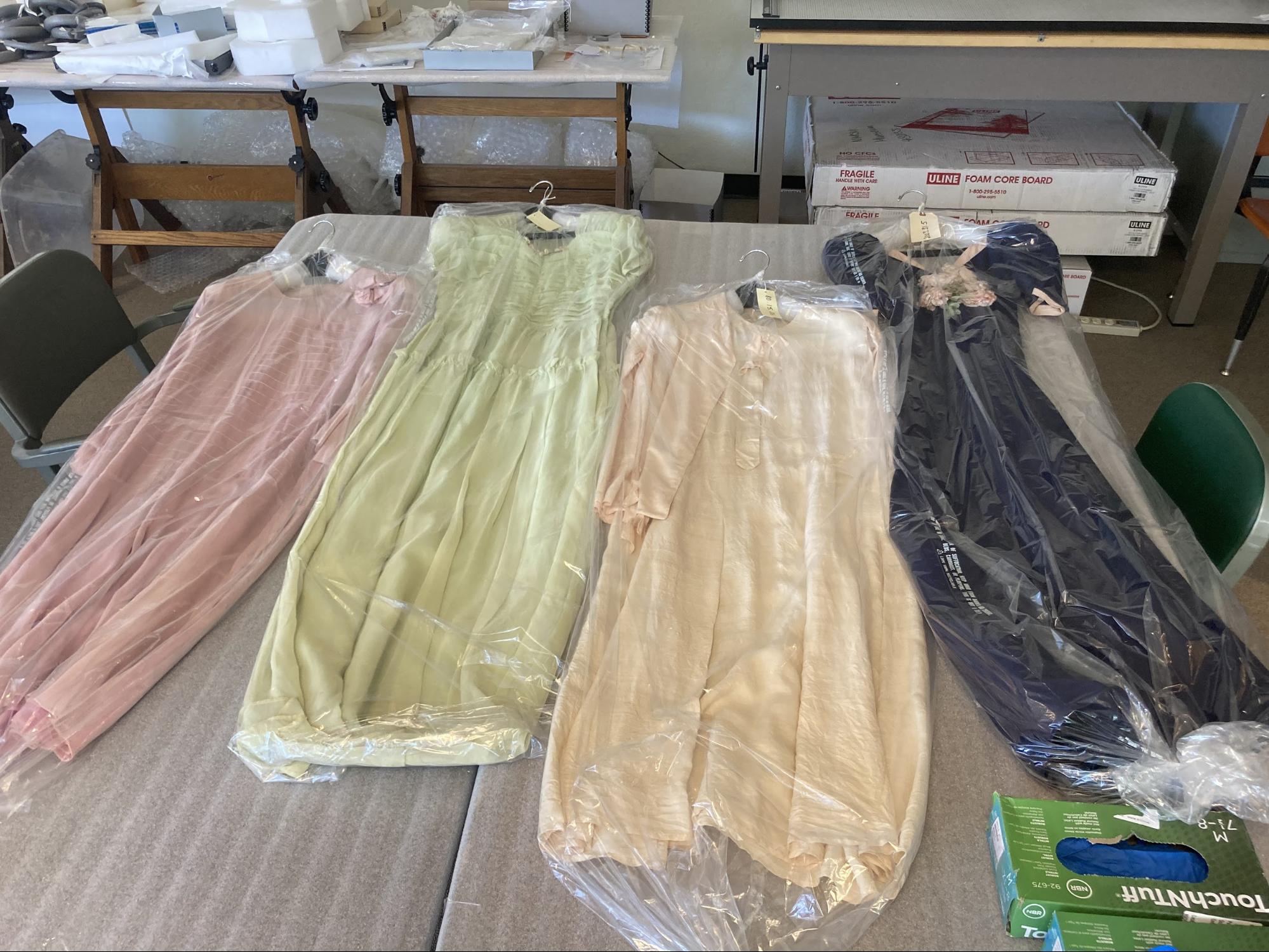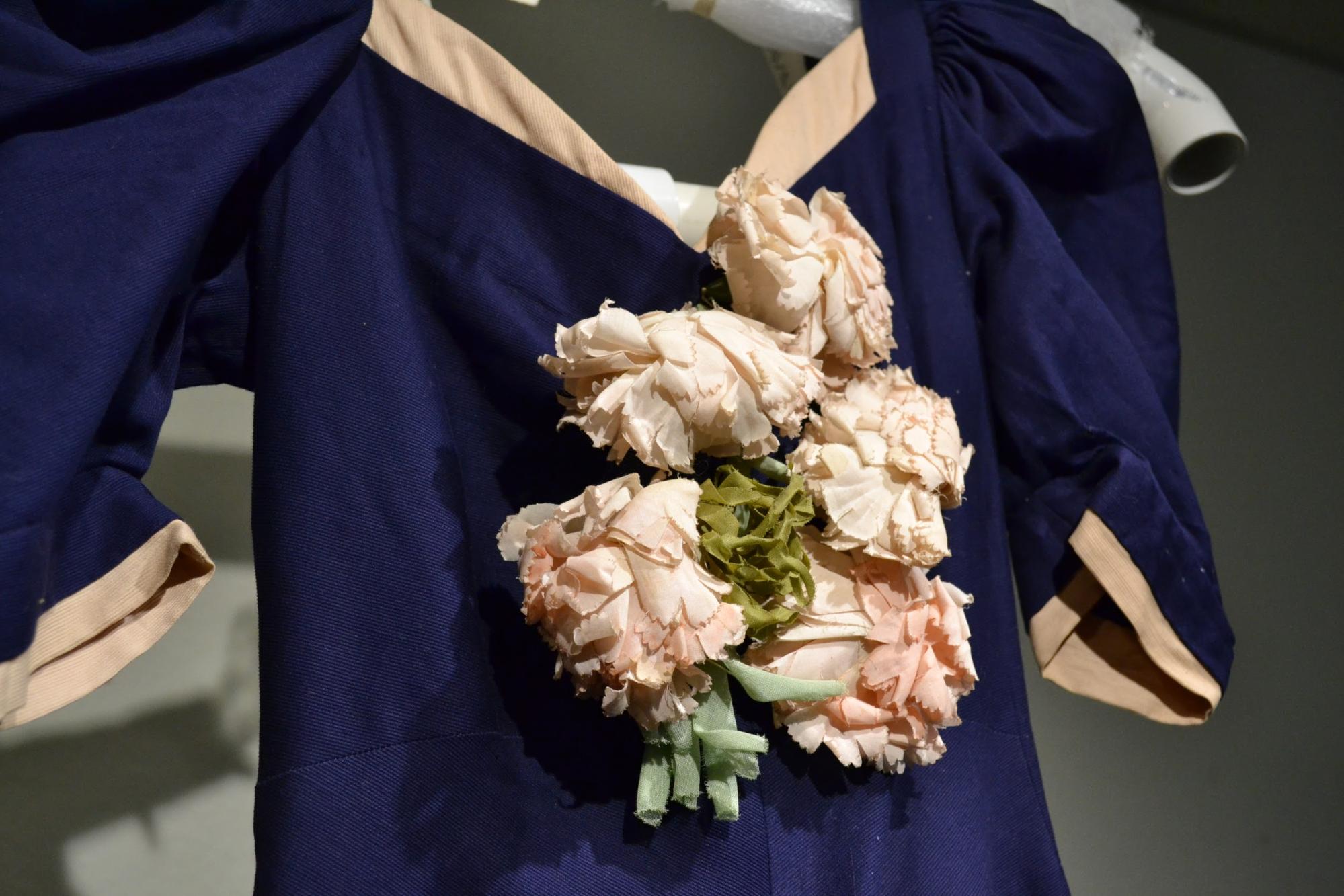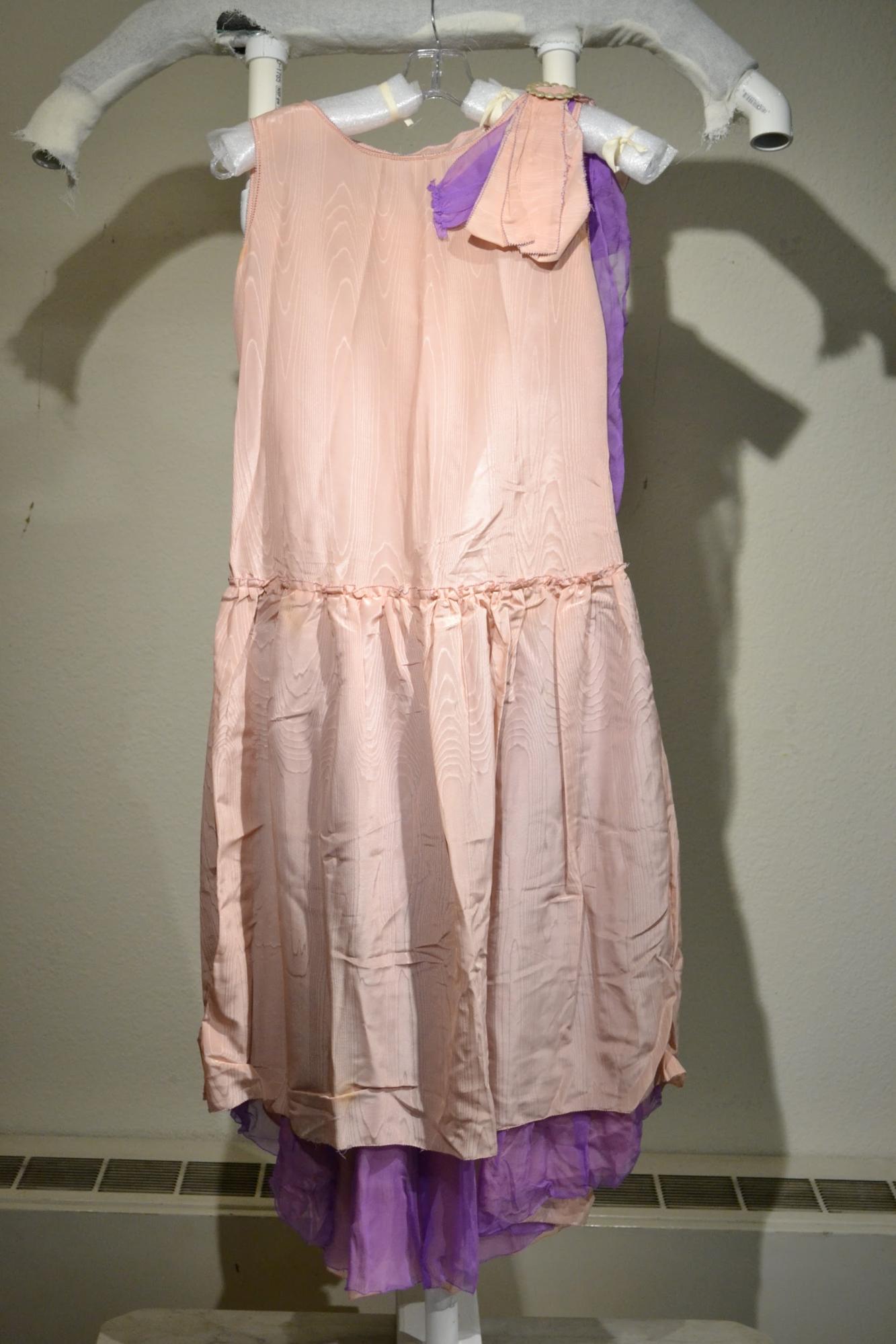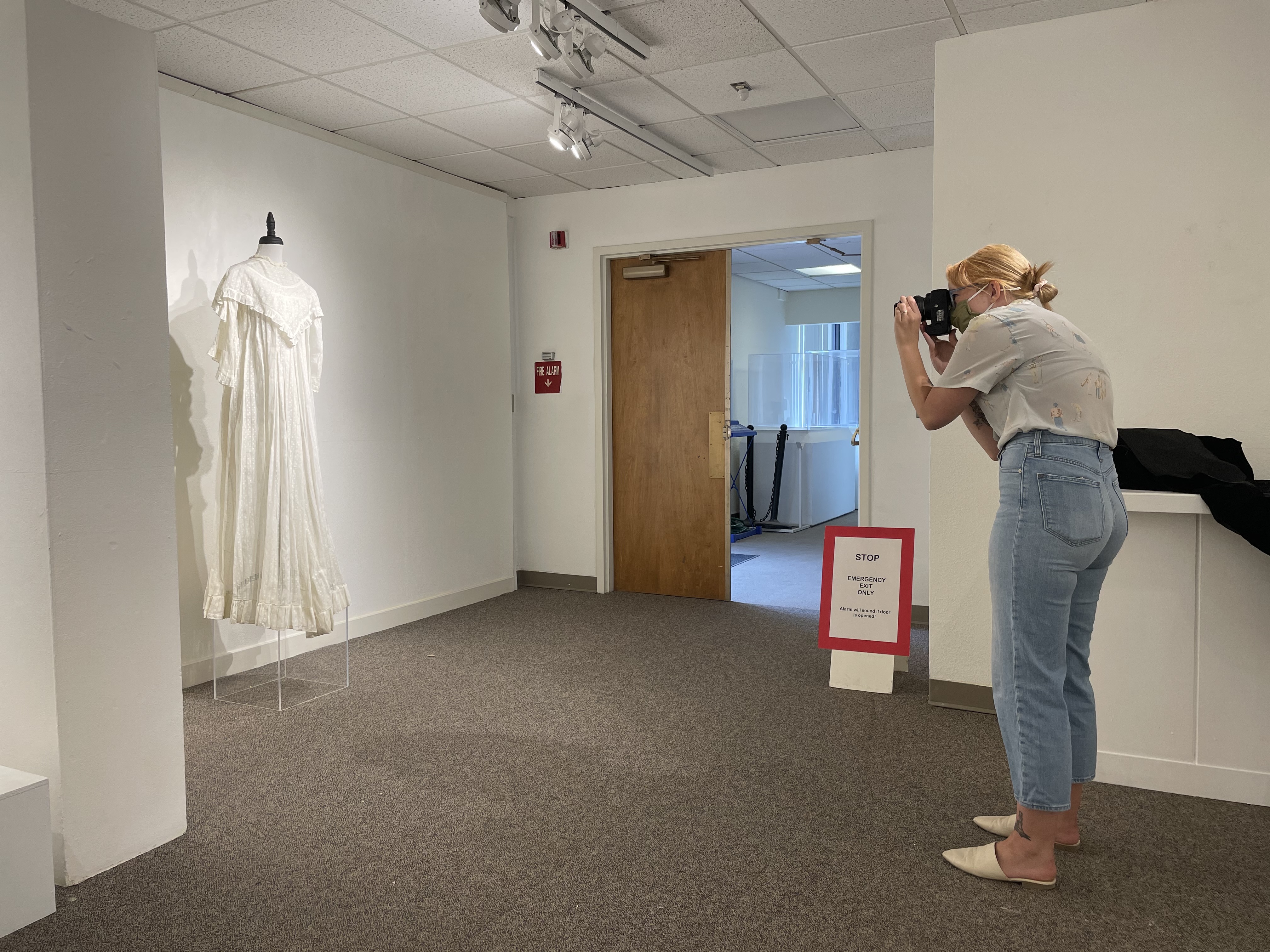During the second half of my semester internship, I’ve been working on the inventory of historical clothing here at the University Museum. This is something I was interested in, as I’ve begun my own personal collection of vintage and historical clothing and accessories over the past few years. However, the process of handling and storing historical clothing that is part of a museum collection, is much different than that of my own personal collection. This was my first time working with clothing and textiles, and throughout the experience I’ve learned a lot about handling, storing, photographing, and even researching historical clothing. In this blog post I’d like to share some of the experiences I had while working within the collection, my tasks, and some of the unique treasures that were found on the garment racks.

A collection of dresses from the 1920s-30s waiting to be inventoried and photographed.
In my last blog post I was working with the section of the historical collection that primarily housed historical home appliances, sheet music, medical supplies, sewing materials, furniture and much more. The Historical Collection at the University Museum is largely related to the history of the Las Cruces and broader border region, extending into Texas and Mexico. Much of the collection was acquired internally through the university, or by donation from local families, alumni, or departments here at NMSU. This also includes the large collection of historical clothing items that range from men and women’s, from the late 1800s up to the 1980s. Many of the items within the collection are personal military uniforms, wedding dresses, vestments and other religious or ritual attire, and everyday outfits from donors or their families. The collection also includes a broad range of cultures and locations ranging from Africa, Mexico, Germany, and the United States (with some tags showing they were made right here in New Mexico!).

Detail of floral applique on floor-length navy and pink gown. 2003.31.05, University Museum.
My main goal as I worked through the racks of clothing was to identify each clothing item for the inventory. I was also reviewed the current storage for each garment, looking for worn or ripped foam on the hangers, and replacing out-of-date storage materials to make sure that all areas of the garment were properly protected. All of the hanging garments are stored with special garment bags to protect the textile from dust, and some of these were also worn or needed to be replaced. Sometimes many of the longer evening gowns required some Do-It-Yourself work, where Dr. Otto and I worked together to secure extra length with a second bag, meticulously making sure that the garment wasn’t exposed to any tape, and that it was fully enclosed within the bag without having any scrunching or folding of the garment at the bottom hem. With materials that are this old are fragile, excess folding and scrunching of the fabric can lead to small wear along the fold lines, especially on thin, delicate linings. These small wears can exaggerate themselves over time and can lead to instability within the garment overall. The main priority when analyzing each garment, was looking for sites of instability, or seam rips that could be harmful to the garment.

Pink silk with purple chiffon lining dress, circa 1920s. 2003.03.01, University Museum.
Throughout this inventory process, I was also photographing the clothing items that will be used in the museum database for easier identification and tracking of objects. This process also required some creative thinking and Do-It-Yourself techniques. Many of the women’s dresses were too small to fit on a traditional mannequin, with waists measuring between 11”-14” flat. This - along with complicated and delicate metal fasteners that would often line an entire length of a bodice - meant that we had to come up with a way that was easier and safer for the clothing items to hang for photography. The creative PVC pipe “mannequin” with foamed lined shoulders was perfect for men’s jackets, women’s blouses and some loose dresses. However, many of the earliest gowns from the 1890’s-1920’s were floor length or longer, both due to the style of the time as well as the occurrence of multiple layers of undergarments often worn beneath the gown, requiring more length. In order to photograph these gowns without their hems reaching the floor, the “mannequin” was placed upon a table, and a foam wrapped hanger was used to elevate the gown and protect the hemline of the skirts. This process was seen through my post on the University Museum’s Instagram, where Dr. Otto and I worked together again to set up a photographing space for a long ‘afternoon dress’ that was loose enough to fit over a traditional mannequin, but too long for the short figure. In this case a small plexiglass case was used to elevate the mannequin and dress and provided the perfect environment for the photograph.

Courtney Uldrich creatively photographing an afternoon dress from the University Museum's collection in the museum's exhibition.
Similarly to my previous work in the other portion of the historical collection, I also set myself the goal of learning how to use my skills and experience with preventative care to focus on a higher degree of care placed on the way that these clothing items were stored and documented. The fragility of many of these garments emphasizes the importance of paying attention to areas of concern, rips, thinning of material, tears, and more. All of the garments in this collection are unique pieces, very few even having store produced labels, meaning that many of the garments may have been hand made or purposefully designed for the wearer. They all hold a unique history through the fabric, and being able to do the research on some of these items this semester has furthered my own admiration for museums that aim to collect and preserve items such as these. There were many pieces that stood out to me during my work, including the graduation gown of a woman who graduated with her BFA in Anthropology in the early 1900s, to another woman who donated dresses that she designed and sold here in New Mexico. So many stories are all woven into these garments, and it’s been such an exciting experience to get to handle them, and work to make sure that they are protected for their future at the University Museum.
- Courtney Uldrich, University Museum Graduate Intern, M.A. Student (Art History), NMSU University Art Museum Graduate Assistant